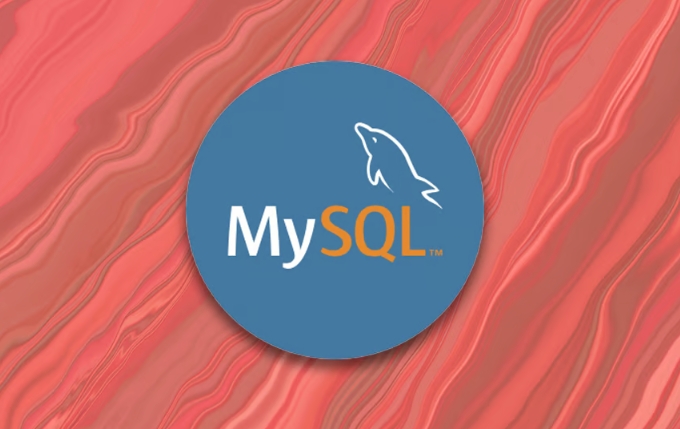Identifying and Resolving Frequent MySQL Server Errors
Jul 06, 2025 am 02:52 AM1. If the connection fails, check the service status, port opening, account permissions and the upper limit of the number of connections; 2. Common error codes such as 1045, 2003, 1206, and 1040 need to be targeted for network, permissions, configuration and connection pool optimization; 3. Check the index, slow log, system resources and transaction submission method first; 4. Crash recovery requires regular backup and test logical and physical backups, enable binlog and monitor master-slave synchronization. The above steps can quickly locate MySQL operation problems by sequentially.

It is common for MySQL errors to occur, especially when a project encounters sudden problems after it is launched, it is very important to quickly locate and resolve errors. This article will not talk about "how to install MySQL", but will directly enter the topic: the recognition and handling methods of common MySQL server errors to help you avoid detours in actual use.

1. Can't connect to MySQL? Check these basic items
Connection failure is one of the most common problems. Users often report that "cannot connect to the database", but the reasons may be diverse:

Is MySQL started?
The most basic issues are also the easiest to be overlooked. You can usesystemctl status mysqlorservice mysql statusto check the service status.-
Is the port open?
The default port is 3306. If you are using a cloud server, you need to confirm whether the security group or firewall releases the port.
Is the account password correct?
The login failure may be due to a wrong password or the user permission configuration may be due to the wrong user permissions. For example, users can only log in from local, while you try to access from remote.-
Is max_connections reaching the upper limit?
If there are too many concurrent connections, this limit may be triggered. You can use to view the current connection number:SHOW STATUS LIKE 'Threads_connected';
It is recommended to give priority to these points, and many times the problems lie in these basic configurations.
2. Interpretation of common error codes and response strategies
MySQL error messages usually contain an error code and description. Understanding several common error codes can save a lot of time:
Error 1045: Access denied for user
Indicates that the user name or password is wrong, or that the user does not have permission to connect from the current host. You can check whetherHostfield in themysql.usertable matches.Error 2003: Can't connect to MySQL server on 'xxx'
Network-level problems may be IP unreachable, port not listened to, or firewall intercept. ping first and then telnet to see if the port is connected.Error 1206: The maximum number of active extensions has been reached
It means that the current number of connections exceeds the system limit. You can adjust it by modifying themax_connectionsconfiguration, but you should also pay attention to whether the server resources are sufficient.Error 1040: Too many connections
Also, there are too many connections, consider optimizing the program connection pool settings to avoid frequent establishment of new connections in a short period of time.
When such errors occur, it is recommended to further analyze them in combination with log files (such as /var/log/mysql/error.log ).
3. Slow query? Don't rush to adjust SQL, look at these indicators first
Many users suspect that SQL is not well written when they encounter slow queries. In fact, it is sometimes a configuration or index problem:
Is there a suitable index?
UseEXPLAINto analyze the query plan and see if there are full table scans. Especially for large tables, the lack of suitable indexes will seriously affect performance.-
Is slow query log enabled?
When enabled, SQL whose execution time exceeds the specified threshold can be recorded, which helps to identify potential bottlenecks. Related parameters include:-
slow_query_log -
long_query_time
-
Is the server resources tight?
CPU, memory, and disk IO may all affect database performance. You can usetop,iostatand other commands to view the system load.Is unnecessary automatic submission enabled?
In batch write operations, turning off automatic commit (autocommit=0) and manually commit transactions can significantly improve efficiency.
Optimizing queries is not just about changing sentences, but also about the overall environment.
4. Database crash? Backup and recovery mechanisms cannot be missing
Although it does not happen every day, once the database crashes, whether or not there is a perfect backup mechanism is life or death:
Regularly do logical backups (mysqldump) and physical backups (xtrabackup)
Choose a backup method according to business needs. MySQLdump is available for small data volume, and xtrabackup is recommended for large data volume.Enable binary logging (binlog)
binlog can be used to recover accidentally deleted data or perform point-in-time recovery. It is recommended to keep log files for a period of time.Test recovery process
Many people only backup and do not test, but only find that they cannot recover when something really happens. It is recommended to practice the recovery process regularly to ensure backups are available.Monitor master-slave replication status (if it is a high-availability architecture)
The master-slave is out of sync and the data will be risked. You can view the replication status throughSHOW SLAVE STATUS\G.
The stable operation of the database is inseparable from good operation and maintenance habits, and preparation in advance is much more important than remediation afterwards.
Basically that's it. These problems occur frequently in daily use and are not particularly complicated to deal with, but they are prone to repeated errors due to inadequate details. If you master these ideas, you can handle them yourself most of the time.
The above is the detailed content of Identifying and Resolving Frequent MySQL Server Errors. For more information, please follow other related articles on the PHP Chinese website!

Hot AI Tools

Undress AI Tool
Undress images for free

Undresser.AI Undress
AI-powered app for creating realistic nude photos

AI Clothes Remover
Online AI tool for removing clothes from photos.

Clothoff.io
AI clothes remover

Video Face Swap
Swap faces in any video effortlessly with our completely free AI face swap tool!

Hot Article

Hot Tools

Notepad++7.3.1
Easy-to-use and free code editor

SublimeText3 Chinese version
Chinese version, very easy to use

Zend Studio 13.0.1
Powerful PHP integrated development environment

Dreamweaver CS6
Visual web development tools

SublimeText3 Mac version
God-level code editing software (SublimeText3)

Hot Topics
 How to add the MySQL bin directory to the system PATH
Jul 01, 2025 am 01:39 AM
How to add the MySQL bin directory to the system PATH
Jul 01, 2025 am 01:39 AM
To add MySQL's bin directory to the system PATH, it needs to be configured according to the different operating systems. 1. Windows system: Find the bin folder in the MySQL installation directory (the default path is usually C:\ProgramFiles\MySQL\MySQLServerX.X\bin), right-click "This Computer" → "Properties" → "Advanced System Settings" → "Environment Variables", select Path in "System Variables" and edit it, add the MySQLbin path, save it and restart the command prompt and enter mysql--version verification; 2.macOS and Linux systems: Bash users edit ~/.bashrc or ~/.bash_
 How to install MySQL on Windows 11
Jun 29, 2025 am 01:47 AM
How to install MySQL on Windows 11
Jun 29, 2025 am 01:47 AM
The key steps for installing MySQL on Windows 11 are as follows: 1. Download the correct version, select the Windows MSI installation package and ensure that the system is 64-bit; 2. Select the "Custom" mode during installation, add MySQLServer and set the appropriate installation path; 3. Run the configuration wizard, select the "ServerComputer" configuration type, set the root password, and select the automatic startup method; 4. After the test installation is successful, if the prompt command is unavailable, add the MySQL bin directory to the system PATH environment variable. Follow these steps to complete the installation and configuration smoothly.
 Resetting the root password for MySQL server
Jul 03, 2025 am 02:32 AM
Resetting the root password for MySQL server
Jul 03, 2025 am 02:32 AM
To reset the root password of MySQL, please follow the following steps: 1. Stop the MySQL server, use sudosystemctlstopmysql or sudosystemctlstopmysqld; 2. Start MySQL in --skip-grant-tables mode, execute sudomysqld-skip-grant-tables&; 3. Log in to MySQL and execute the corresponding SQL command to modify the password according to the version, such as FLUSHPRIVILEGES;ALTERUSER'root'@'localhost'IDENTIFIEDBY'your_new
 Handling NULL Values in MySQL Columns and Queries
Jul 05, 2025 am 02:46 AM
Handling NULL Values in MySQL Columns and Queries
Jul 05, 2025 am 02:46 AM
When handling NULL values ??in MySQL, please note: 1. When designing the table, the key fields are set to NOTNULL, and optional fields are allowed NULL; 2. ISNULL or ISNOTNULL must be used with = or !=; 3. IFNULL or COALESCE functions can be used to replace the display default values; 4. Be cautious when using NULL values ??directly when inserting or updating, and pay attention to the data source and ORM framework processing methods. NULL represents an unknown value and does not equal any value, including itself. Therefore, be careful when querying, counting, and connecting tables to avoid missing data or logical errors. Rational use of functions and constraints can effectively reduce interference caused by NULL.
 Troubleshooting MySQL installation errors on Windows
Jun 27, 2025 am 01:22 AM
Troubleshooting MySQL installation errors on Windows
Jun 27, 2025 am 01:22 AM
Common problems with installing MySQL on Windows include the service cannot be started, the port is occupied or the configuration failed. The solutions are as follows: 1. When encountering "MySQL80 service cannot be started", you should stop and delete the old service, clean up residual data, or use the "Remove" function that comes with the installer; 2. If an error is reported as "Error:1053" when starting the service, you need to check the log to confirm the port conflict and modify the port number in my.ini; 3. When the configuration wizard prompts "Service not responding", check and end the unresponsive mysqld.exe process, or manually run mysqld--console to view the output; 4. If the connection to the database is denied, you can use the password-free login method to reset the root user password.
 Analyzing the MySQL Slow Query Log to Find Performance Bottlenecks
Jul 04, 2025 am 02:46 AM
Analyzing the MySQL Slow Query Log to Find Performance Bottlenecks
Jul 04, 2025 am 02:46 AM
Turn on MySQL slow query logs and analyze locationable performance issues. 1. Edit the configuration file or dynamically set slow_query_log and long_query_time; 2. The log contains key fields such as Query_time, Lock_time, Rows_examined to assist in judging efficiency bottlenecks; 3. Use mysqldumpslow or pt-query-digest tools to efficiently analyze logs; 4. Optimization suggestions include adding indexes, avoiding SELECT*, splitting complex queries, etc. For example, adding an index to user_id can significantly reduce the number of scanned rows and improve query efficiency.
 Performing logical backups using mysqldump in MySQL
Jul 06, 2025 am 02:55 AM
Performing logical backups using mysqldump in MySQL
Jul 06, 2025 am 02:55 AM
mysqldump is a common tool for performing logical backups of MySQL databases. It generates SQL files containing CREATE and INSERT statements to rebuild the database. 1. It does not back up the original file, but converts the database structure and content into portable SQL commands; 2. It is suitable for small databases or selective recovery, and is not suitable for fast recovery of TB-level data; 3. Common options include --single-transaction, --databases, --all-databases, --routines, etc.; 4. Use mysql command to import during recovery, and can turn off foreign key checks to improve speed; 5. It is recommended to test backup regularly, use compression, and automatic adjustment.
 Establishing secure remote connections to a MySQL server
Jul 04, 2025 am 01:44 AM
Establishing secure remote connections to a MySQL server
Jul 04, 2025 am 01:44 AM
TosecurelyconnecttoaremoteMySQLserver,useSSHtunneling,configureMySQLforremoteaccess,setfirewallrules,andconsiderSSLencryption.First,establishanSSHtunnelwithssh-L3307:localhost:3306user@remote-server-Nandconnectviamysql-h127.0.0.1-P3307.Second,editMyS







